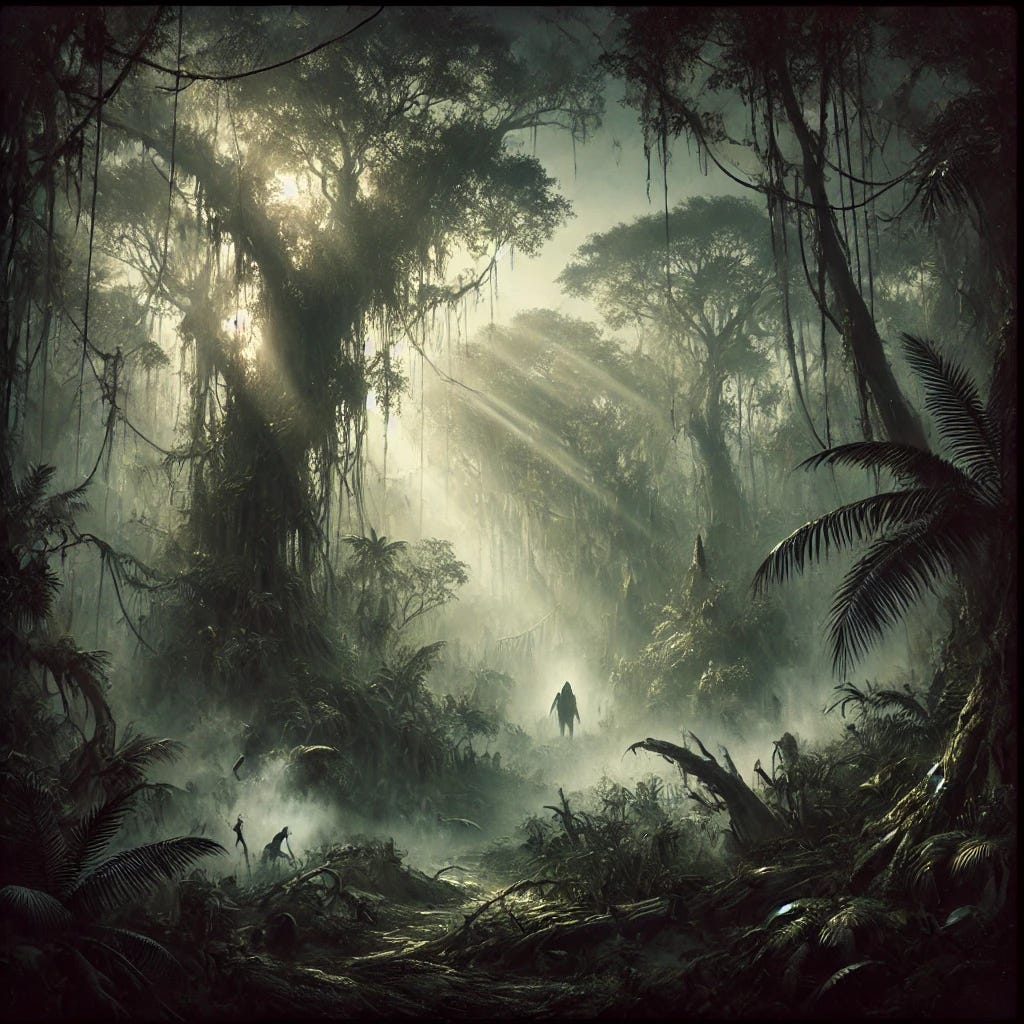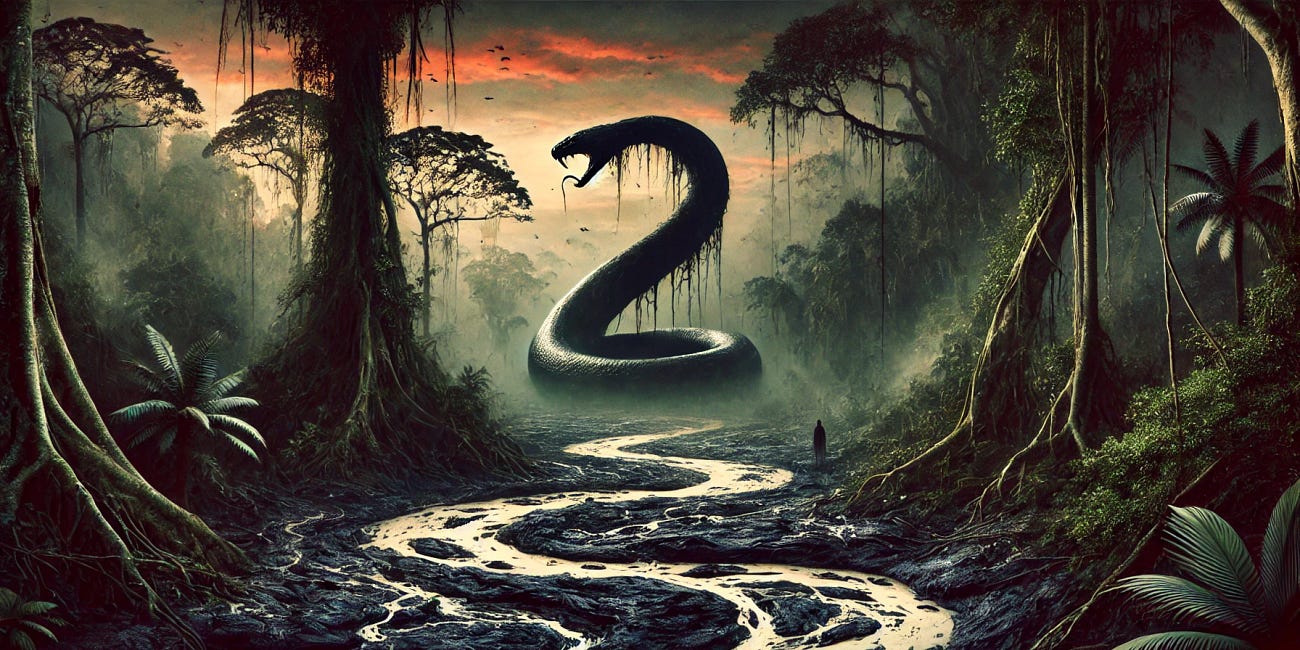Material Ecocriticism and Sentiment Analysis Reveal a New Way to Read Conrad’s Masterpiece
This is the first part of some notes that will be published in two parts in the next days. It’s an attempt to find a path to reread Conrad’s masterpiece using ecocriticism tools, verifying some ideas through digital humanities methodologies. In particular sentiment analysis. This approach will help to analyse the language used by the novel’s two protagonists, focusing on the emotional tone that Conrad uses to describe their relationship with nature.
Dall E 3 interpretation of Kurtz presence in the Jungle
A neo-materialist reading also provides new interpretative perspectives for analysing the relationship between the protagonists and the natural context in which they operate. It frames the actions of characters and actants on a temporal and spatial scale that goes beyond historicism and sociocultural aspects.
Joseph Conrad’s Heart of Darkness (1899) is often studied for its critique of colonialism, its exploration of human psychology, and its purportedly racist underpinnings. The literature on these topics is as vast as Africa itself. These ambiguous themes, famously raised by Chinua Achebe’s essay, has also been tackled through the lenses of postcolonialism, psychoanalysis, and existentialism, focusing on the human dimensions of imperialism, morality, and identity.
On the one hand, the novel delivers a fierce critique of colonialism. Yet, the language and stereotypes used to describe Africa and Africans are, according to some, products of the same colonial mindset.
Most critics highlight the symbolic representation of Africa as a space of "darkness" and "savagery," exploring how Conrad’s narrative reflects a colonial worldview. However, the powerful depiction of nature—both as a physical presence and a symbolic force—deserves deeper scrutiny.
An ecocritical and neo-materialist reading of Heart of Darkness can broaden the perspective, reframing the discussion in a new "light."
Conrad’s evocative use of "darkness" in his language constructs a powerful and suggestive narrative style, capable of conveying the immense force of the African landscape as it resists colonial violence.
In its own way, this novel establishes a canon for adventure fiction and innovates the way the relationship between humans and nature is portrayed, offering insights that remain relevant today.
Moreover, the role of non-human agency—rivers, forests, ivory, and even time itself—in shaping the events and themes of the story is critical. By analyzing the text through these lens, we can explore how agency is distributed across human and non-human actors and how alternative scales of time and space allow the non-human world to emerge as an active participant in the narrative.
a Dall E interpretation of this post
Here it is the first part of the notes announce above
Material Ecocriticism and Heart of Darkness Part 1
Heart of Darkness is among the books most readily available for ecocritical analysis. Hundreds, if not thousands, of articles have been published on the role of nature and the relationship between the novel, its language, the environment, and its perception.






